
Kagawa has long hours of sunshine and a warm climate, and so can produce a wide variety of crops. Although there is only about 7,000㎡ of arable land per farm family, by combining the main product, rice, with wheat, vegetable fruit, horticultural products and livestock, Kagawa actually has a high productivity rate, and its produce is of high quality.
Kagawa is the number 1 producer of red carrots, olives and marguerite in Japan.
Kagawa prefecture's farmers have created several patented strains of various crops, which are used for production of high quality foods and drinks. Sanuki Yoimai rice is highly prized as a strain which produces a very balanced, clear tasting sake (nihonsyu).Wheat for the nationally renowned Sanuki udon noodles, known as Sanuki no Yume 2000 is another exclusive crop, as are Sanuki Hime strawberries and Sanuki Gold kiwi fruits.
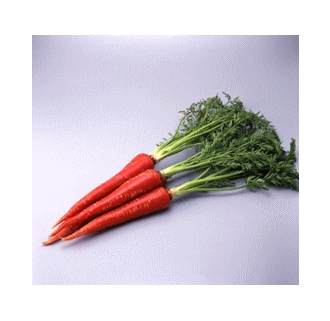
"K. Brand" is a system in Kagawa to recognize products of a particularly high quality. There are three criteria by which a product may attain "K. Brand" status:
1. The product is of particularly high quality
2. The product is recognized as having something unique about it or its production method
3. The product has something special about it's ingredients or preparation
"K. Brand" is administered by the Council to Promote Distribution and Consumption of Kagawa Products. It is a symbol of Kagawa’s confidence and pride in these products.
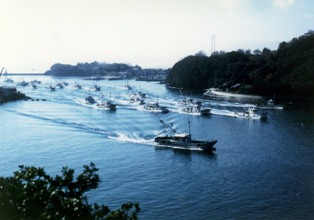
Cultivation of laver (nori) and Japanese amberjack (buri) are highlights of the Seto Inland Sea fisheries industry. Seasonal production focuses on the lancefish (ikanago) and anchovy (katakuchi-iwashi); many varieties of fresh fish are available year round.
Large-scale cultivation of Japanese amberjack (13,000 tons in 2002, fourth in the nation), and laver (38,000 tons in 2002, fifth in the nation) make Kagawa an important national producer of these two products. Other important varieties include red Pacific sea bream (madai), flounder (hirame), oysters (kaki), red clam (aka-gai), wakame, and konbu seaweed.
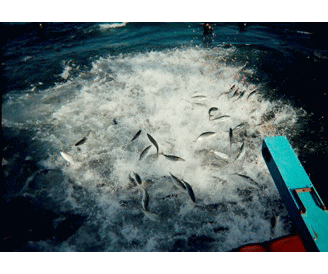
The yellowtail is called by different names as it ages. In Kagawa, this progression is tsubasu, hamachi, mejiro, and then buri.
In 1920, Wasaburo Noami successfully cultivated the first Japanese yellowtail in Adoike, a salt water pond in present-day Higashi Kagawa (then known as Hiketa). Hamachi went on to be named Prefectural Fish in 1995. Recent years have seen it become a very important part of Kagawa’s fisheries industry, where it is raised from April to December or January.
Favored ways of preparing hamachi include serving it as sashimi: sliced raw, and served on its own fat. Cooking it teriyaki style or salted and broiled are both appropriate, and lately shabu-shabu preparation is in vogue.
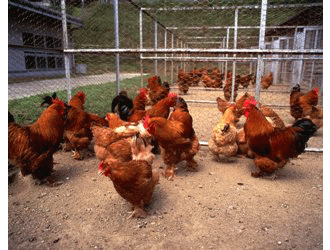
Though the total number of cattle and poultry is low, this industry has a long tradition of intensive management. It is an important sector financially, grossing 25.6 billion yen in 2006, which represents 32.2% of the 79.6 billion yen that Kagawa's agriculture industry grossed overall.
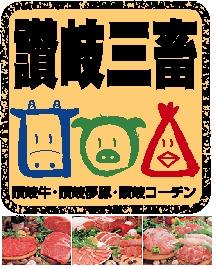
Three animals that have become prefectural brands are the Sanuki Cochin, a chicken with resplendent leg feathers; Sanuki yumebuta, which produces highly valued meat; and the Sanuki ushi (cow), a black-furred variety of Japanese beef cow that has claimed 6th place on the 15-place scale ranking meat quality.
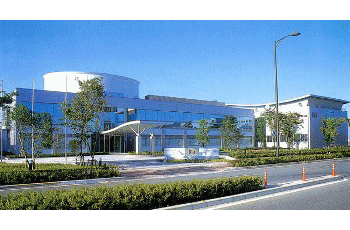
Many public facilities such as FROM Kagawa (Kagawa Prefecture Science and Technology Center), NEXT Kagawa (Support Facility for New Industry), The Research Institute for Solvothermal Technology, The Kagawa Industrial Intelligence Center, The Kagawa University Department of Engineering and The National Institute of Advanced Industrial Science and Technology, Shikoku are based here in Kagawa, and many private facilities researching and developing the latest technology have located to the surrounding areas, which has led to a new city developing out of this cluster of R&D facilities and industrial support facilities.
The idea behind the Kagawa Intelligent Park is to use this agglomeration of industrial, academic and government facilities to its full potential and offer support to research and development projects in emerging fields such as nanotechnology and biotech sugar research. We aim to establish the park as "a centre for creating new industries and new research and development by linking industry, academia and government."

The Takamatsu Container Terminal was opened in March of 1997, in Takamatsu Port's F-area (Takamatsu, Asahi Shinmachi). Expanding trade is focused on Asian countries such as China and Korea, and charter container ships transit from Pusan, Shanghai, and Tsingtao. Plans are in the works to increase trade capacity by expanding the yard and adding additional facilities to the terminal. The opening of the trans-Shikoku expressway has made the port even more convenient.
Current plans are also being developed for the installation of a 30,000 ton, 12-meter submerged breakwater in the F-area. It is also necessary to develop this international terminal to meet the demands of increasingly large freighters carrying an increasing amount of cargo. Further functional enhancement is aimed at earthquake resistance, and in ensuring an easy rebuild in case of damage from an extremely large-scale earthquake. With these improvements, we hope that the terminal can also prove an agent of vitalization for local economic development.

Kagawa Prefecture is blessed with a rich natural environment, from the myriad beautiful islands of the Seto Inland Sea, to the green of the mountains in the Sanuki Range, to the ponds and groves dotting the Sanuki Plain. It is our responsibility to pass on that which has been handed down to us in this, our irreplaceable home.
The prefecture strives to maintain the environment through a variety of policies, including measures targeting pollution and illegal dumping. Climate change prevention initiatives take place at the local level, too, with the promotion of energy saving both at home and in the office, and suggestions for savings in daily life. The prefecture is also examining the possibility of assigning responsibility for climate change policies to individual workers.
We believe that it is important to build a recycling-oriented society, and to promote a local culture in which every citizen recycles at home and at work in order to tread more lightly on the earth.
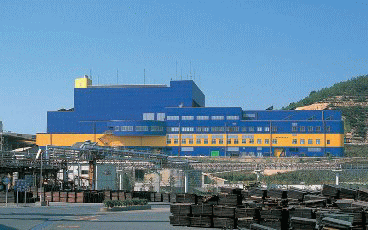
The town of Naoshima is blessed with a beautiful natural environment, part of the 27 islands of the Seto Inland Sea. The “Eco-Island Naoshima Plan” describes the creation of a recycling-oriented society that could be used as a model on a national level. The Japanese government (Ministry of Economy, Trade, and Industry; Ministry of the Environment) approved the plan as progressive and unique, a first among island municipalities.
The plan outlines a new environmental industry (infrastructure support), and towns built up in harmony with the environment (social support).
The infrastructure support calls for reclamation of materials from disposal facilities: the waste streams from fly ash, disposed household electronics, and dust from automobile shredders, will become a “town mine”, and will be processed to reclaim gold, silver, copper, lead, zinc and other valuable metals instead of burying them. Waste heat will also be reclaimed and used to produce power.
The social support entails the cooperation of local residents and workers with the government to decrease waste, plant trees and flowers, and hold workshops and symposiums on the environment.
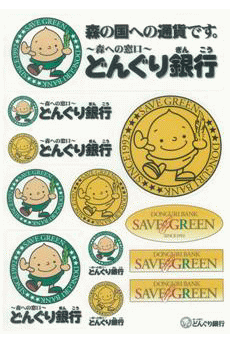
Kagawa Prefecture contains approximately 880km2 of forest, which makes up about 47% of the total area of the prefecture. Most of these forests are comprised of deciduous broad-leaved trees (such as the sawtooth oak, or kunugi, and konara oak, or konara) and pines. Around 85% of the forests are close to human populations, and have long been utilized by them. These forests must be maintained not just by the landowners and logging companies, but by everyone in the prefecture.
Since 1992, the Donguri (acorn) Bank has promoted opportunities for prefectural residents, particularly children, to experience the forests all around them. The planting of saplings, trimming of underbrush, and other activities, reinforce the importance of forests, and allow locals to become better acquainted with their preservation. The bank uses acorns as the unit of currency, representing them not with \ but with a D (for donguri, or acorn). Deposits can be made, and when an account reaches a certain level, the deposit is exchanged for a sapling which can then be planted. The bank is very popular among children; there were 16,000 account holders registered as of 2005.
Increased activity in forests leads to increased awareness, and volunteer activity in forest maintenance is on the rise.
 Kagawa Prefecture, Japan
Kagawa Prefecture, Japan